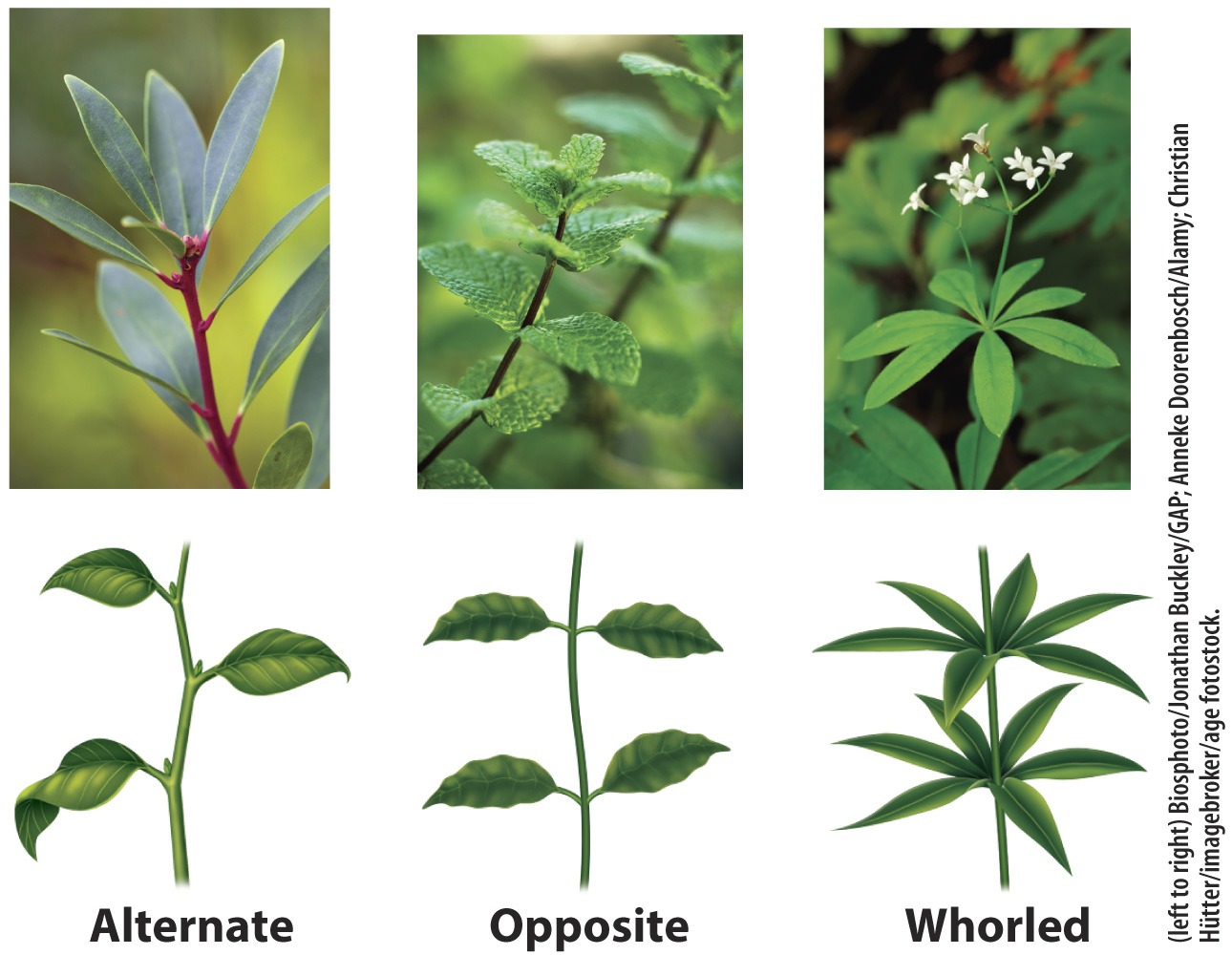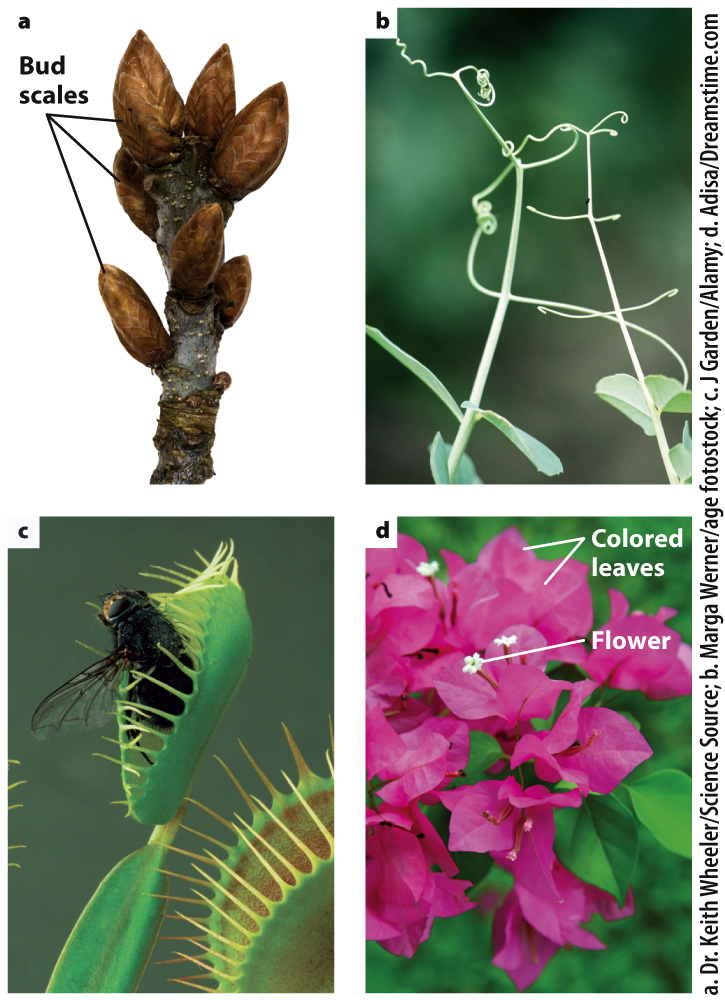The shoot apical meristem controls the production and arrangement of leaves.
The earliest vascular plants were simple branching stems, and photosynthesis took place along the length of the stem. As evolution proceeded, some branch systems became flattened, increasing the capture of light. These planar branches lost the capacity for continued growth. By about 380 million years ago, the planar branches became modified into structures recognizable as leaves (Fig. 31.5).
645

The evolution of leaves required several developmental changes. Apical meristem identity genes were down-
The arrangement of the leaves along a stem has a major impact on how much sunlight each leaf receives and therefore on how much photosynthesis is carried out. Leaves begin as small bumps, called primordia (singular, primordium), which form on the sides of the shoot apical meristem in a highly regular pattern (see Fig. 31.2). Each species has a characteristic number of leaves attached at each node along the stem. Some species have only a single leaf at each node, whereas others have two or more (Fig. 31.6). The regular placement of leaves reduces the shading of one leaf by another and thus enhances the ability of plants to obtain sunlight.

When we think of leaves, it is the green photosynthetic ones that first come to mind. However, many plants produce leaves that are specialized for functions other than photosynthesis, including climbing, trapping insects, and attracting pollinators (Fig. 31.7). Plants that overwinter produce small, hard bud scales that protect shoot apical meristems from water loss and damage due to cold. Bud scales may not look like leaves, but they form from leaf primordia and are arranged in the same way around the stem as the green leaves produced in spring.
646
